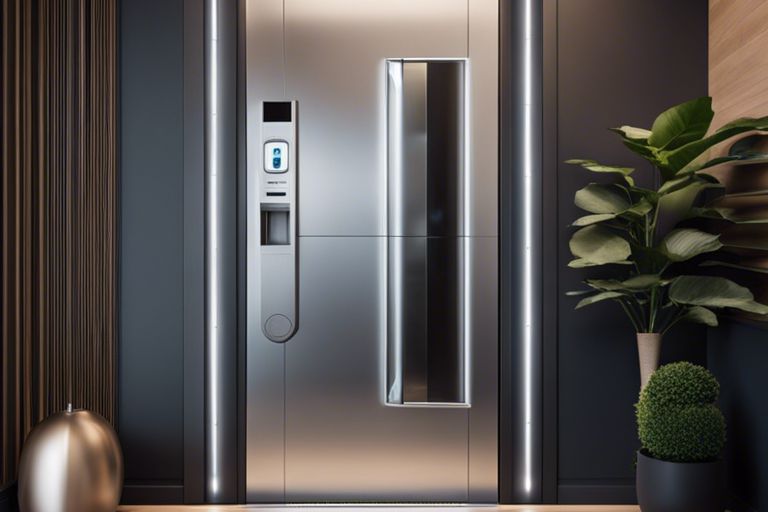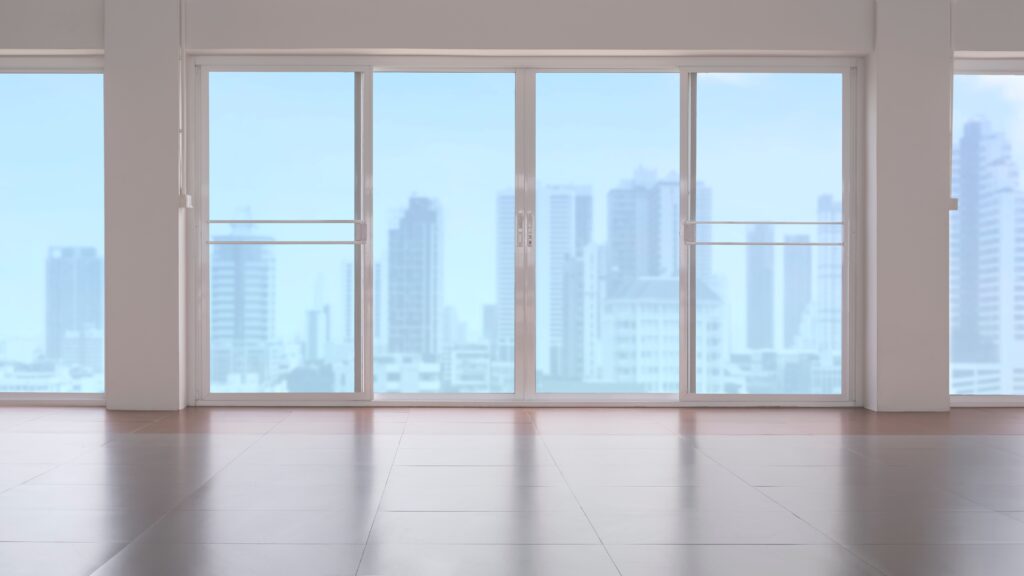When it comes to custom window and door designs, the material you choose is crucial. If you’re looking for the perfect combination of flexibility and versatility, aluminium is the way to go. Not only is it lightweight and durable, but it also provides endless possibilities for customization. Whether you’re looking for sleek, modern designs or vintage, intricate styles, aluminium can be molded and crafted to meet your specific requirements. Its strength and resistance to rust and corrosion make it a top choice for custom window and door designs that stand the test of time. So, if you want to elevate the look and feel of your space with custom windows and doors, aluminium is the perfect choice for you.
Key Takeaways:
- Lightweight and durable: Aluminium is a lightweight yet robust material that provides the perfect combination of strength and durability for custom window and door designs.
- Customizable shapes and sizes: Aluminium can be easily manipulated to create custom window and door designs in various shapes and sizes, allowing for flexibility in design options.
- Energy efficiency: Aluminium frames can be fitted with thermal breaks and other energy-efficient features to improve the overall energy performance of windows and doors.
- Low maintenance: Aluminium is resistant to corrosion and does not require frequent maintenance, making it an ideal choice for custom window and door designs.
- Modern aesthetic: The sleek, modern look of aluminium lends itself well to contemporary window and door designs, adding a touch of sophistication to any space.
- Wide range of finishes: Aluminium can be finished in a variety of colors and textures, offering endless possibilities for customization in window and door designs.
- Environmentally friendly: Aluminium is a sustainable and recyclable material, making it an environmentally friendly choice for custom window and door designs.
Types of Aluminum Window and Door Designs
The flexibility of aluminum as a material allows for a wide range of window and door designs. Here are some popular options:
- Casement Windows: These are hinged at the side and can be opened outward to the left or right.
- Double-Hung Windows: Both the upper and lower sashes are operable, allowing for improved ventilation and easy cleaning.
- Sliding Windows: These have one or more movable panels that slide horizontally.
- Bifold Doors: These are perfect for openings with limited space, as they fold easily to one or both sides.
- French Doors: These are double doors with large glass panels, often used as entrances to patios or gardens.
The Versatile Advantages of Aluminum Extrusions can be seen in the strength and durability of these different designs. Though aluminum windows and doors offer a modern, sleek appearance, they are also highly customizable to fit any architectural style or design preference.
Traditional vs. Modern Aluminum Frames
Aluminum window and door frames have come a long way from their traditional designs. Modern aluminum frames are now thermally broken, meaning they have a barrier in between the inside and outside of the frame to prevent heat transfer. This makes them more energy-efficient and reduces condensation. Traditional aluminum frames were known for conducting heat and cold, often resulting in higher energy bills and a less comfortable interior environment.
Specialty Designs: Bifold, Sliding, and Casement
When it comes to specialty designs for aluminum doors and windows, the options are endless. Bifold doors provide a seamless transition between indoor and outdoor living spaces, sliding windows offer unobstructed views and easy operation, and casement windows allow for maximum ventilation. The versatility of aluminum allows for these specialty designs to be both aesthetically pleasing and highly functional, offering a great way to enhance your home.
Step-by-Step Customization Process
Some custom window and door designs follow a step-by-step process to ensure that the final product meets your specific requirements. The customization process typically begins with the conceptualization and planning of the design, followed by selecting the right aluminum material and finishes for your project. This detailed approach allows you to have full control over the design and ensures that the end result is tailored to your needs.
Design Conceptualization and Planning
When embarking on a custom window and door design project, the first step is to conceptualize and plan the design. This involves working closely with a design team and discussing your vision for the final product. You will have the opportunity to outline your specific requirements, including the size, style, and functionality of the windows and doors. During this stage, you will also consider any architectural or aesthetic elements that need to be incorporated into the design.
Selecting the Right Aluminum Material and Finishes
After the initial design concept has been established, the next step is to select the right aluminum material and finishes for your custom windows and doors. This is a crucial decision that will impact the overall appearance and performance of the final product. You will have the opportunity to choose from a variety of aluminum profiles, including different thicknesses and strengths, to ensure that the windows and doors are durable and long-lasting. Additionally, you will be able to select from a range of finishes, such as anodized or powder-coated options, to achieve the desired aesthetic for your project.
Factors to Consider When Choosing Aluminium for Custom Projects
Not all materials are equal when it comes to custom window and door designs. When deciding on the best material for your project, there are several factors to consider. Here are some key factors to keep in mind when choosing aluminium for your custom projects:
- Thermal Performance and Energy Efficiency
- Durability, Maintenance, and Aesthetics
- Customization and Design Options
- Environmental Impact
The right choice of aluminium for your custom window and door designs can significantly impact the overall performance and aesthetics of your project.
Thermal Performance and Energy Efficiency
When it comes to custom window and door designs, thermal performance and energy efficiency are crucial factors to consider. Aluminium frames with thermal breaks can greatly improve the energy efficiency of your home, reducing heating and cooling costs. With the right design and insulation, you can optimize the thermal performance of aluminium custom windows and doors to create a comfortable and energy-efficient living space.
Durability, Maintenance, and Aesthetics
One of the key advantages of aluminium for custom window and door designs is its exceptional durability and low maintenance requirements. Aluminium frames are resistant to corrosion, warping, and cracking, making them ideal for long-term use. Additionally, the aesthetic versatility of aluminium allows for a wide range of customization options, from sleek modern finishes to traditional designs that can complement any architectural style.
Tips for Maximizing Aluminum’s Versatility
For custom window and door designs, aluminum presents a multitude of possibilities. To make the most of its flexibility and versatility, consider the following tips:
- Utilize aluminum’s lightweight and durable nature to create sleek and modern designs for your windows and doors.
- Explore different finishing options such as powder coating or anodizing to achieve the desired aesthetic for your custom designs.
- Combine aluminum with other materials such as wood or glass to create unique and high-performance window and door designs.
Recognizing the potential of aluminum in Design that matters: shaping the future with aluminium can inspire you to think outside the box and incorporate cutting-edge elements into your project.
Combining Materials for Enhanced Performance
When it comes to enhancing the functionality and aesthetics of your window and door designs, combining aluminum with other materials can yield impressive results. The marriage of aluminum with wood or glass can offer enhanced insulation, durability, and visual appeal to your custom designs, allowing you to achieve the perfect balance of form and function.
Innovative Uses in Various Architectural Styles
Regardless of the architectural style you are working with, aluminum can be tailored to suit your specific design needs. From modern and contemporary to traditional and eclectic styles, the versatility of aluminum allows for innovative applications that can seamlessly integrate with various architectural aesthetics, providing you with the freedom to bring your unique vision to life.
Pros and Cons of Aluminium in Window and Door Designs
Your decision to use aluminium for custom window and door designs comes with both advantages and potential drawbacks. It is important to weigh these carefully in order to make an informed choice for your project. Here is a breakdown of the pros and cons of using aluminium in window and door designs:
| Pros | Cons |
| 1. Lightweight and easy to work with | 1. Conducts heat and cold, potentially impacting energy efficiency |
| 2. Highly durable and resistant to corrosion | 2. Can be more expensive than other materials |
| 3. Sleek and modern aesthetic | 3. Limited color options compared to other materials |
| 4. Low maintenance and long-lasting | 4. Can be prone to denting or scratching |
| 5. Recyclable and environmentally friendly | 5. Poor insulation properties without thermal break technology |
Advantages of Aluminium in Customization
When it comes to customizing window and door designs, aluminium offers a range of advantages. Its lightweight nature and strength allow for intricate and unique designs, making it a versatile material for custom projects. With aluminium, you have the flexibility to create custom shapes, sizes, and configurations to perfectly suit your design vision. The durability and weather resistance of aluminium also make it an ideal choice for custom designs that need to withstand various environmental conditions.
Potential Drawbacks and Mitigation Strategies
While aluminium has numerous advantages, it is important to consider potential drawbacks as well. One common concern is its thermal conductivity, which can impact energy efficiency. However, this can be mitigated through the use of thermal break technology. Additionally, the initial cost of aluminium may be higher than other materials, but its long-term durability and low maintenance requirements can offset this investment over time. By carefully considering these drawbacks and implementing mitigation strategies, you can ensure that your custom window and door designs meet your requirements while leveraging the benefits of aluminium.
Conclusion: The Flexibility and Versatility of Aluminium for Custom Window and Door Designs
To wrap up, the flexibility and versatility of aluminium make it an ideal material for custom window and door designs. Its strength, durability, and lightweight nature allow for intricate and unique designs that can be customized to fit your specific needs and preferences. Whether you are looking for modern, sleek windows or ornate, intricate doors, aluminium can be molded and crafted to meet your design requirements. Additionally, its resistance to corrosion and ability to withstand harsh weather conditions make it a long-lasting and low-maintenance option for your home or business. When it comes to custom window and door designs, the adaptability and functionality of aluminium truly set it apart as a top choice.
FAQ
Q: What makes aluminium a flexible material for custom window and door designs?
A: Aluminium is lightweight, yet strong, and easily malleable, allowing for the creation of custom shapes and sizes for windows and doors.
Q: Can aluminium be customized to fit unique architectural designs?
A: Yes, aluminium can be easily customized to fit unique architectural designs, providing flexibility for creative and innovative window and door solutions.
Q: Is aluminium a durable material for custom window and door designs?
A: Aluminium is highly durable and resistant to corrosion, making it a long-lasting choice for custom window and door designs, particularly in coastal or high-moisture environments.
Q: How does aluminium contribute to energy efficiency in window and door designs?
A: Aluminium frames provide excellent thermal performance, helping to improve energy efficiency in buildings by reducing heat loss through windows and doors.
Q: Can aluminium be finished in different colors and textures for custom window and door designs?
A: Yes, aluminium can be finished with a wide range of colors and textures, offering versatility in design and allowing for customization to complement any architectural style.
Q: Is aluminium a sustainable choice for custom window and door designs?
A: Aluminium is a highly sustainable material, as it is 100% recyclable and has a long lifespan, reducing the overall environmental impact of window and door products.
Q: How does aluminium contribute to the security of window and door designs?
A: Aluminium is inherently strong and resistant to forced entry, providing enhanced security for windows and doors in residential and commercial properties.






